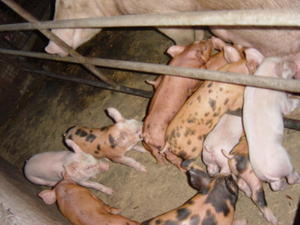
We run the earth with a population that is twice as great as almost any other species on earth. By failing to change this, and accepting the fact that we will rule not by strength but by quantity, we have agreed to the responsibility of caring for the smaller populations. When someone walks into a house and sees two house cats sitting on the couch, "cruelty" is not usually the word to come to mind. This is because we have bred and forced every ounce of instinct and independence out of these animals. Dogs are the same, and animals such as reptiles and birds are close behind. I'm not saying we should all release our house pets to the life of freedom they long for, because where would they go? Out to the open plains where the wind blows through the trees and the circle of life is restored? I don't think such a place exists anymore. And whatever ones do exist will soon be demolished as more families expand and have more kids they can't afford and continue to overwhelm and modernize the planet, replacing all traces of wildlife with urban landscapes.
We have an abundance of cats and dogs that live on the streets because no one wants them. We have people who take their anger out on smaller species that would never lose their faith or loyalty to us. We neglect them. How can we introduce more species, species that are harder to control, species that are larger and stronger than we could ever hope to be, as being our pets when we have such big problems to deal with surrounding the domesticated animals we have now? These big cats, and wild animals are struggling to survive in their consistently diminishing habitats as we speak. How can we possibly think that domesticating them, and taking away their instincts will help them?

I'm not sure if anyone else agrees with me, or if this is just a cute way of enjoying wildlife literally from your own home, but I fail to see the up side to this. I'm sure the cats don't find anything wrong with it, I'm sure they're not unhappy simply because they've never experienced anything better. It breaks my heart to think that when the animal chews something up, or attacks someone, it will be put down when it is only doing what the small amount of instinct that remains, is telling him.

A good example of this is the woman who owned a chimpanzee. Her friend came over to the house because the chimp got out of its cage (God forbid) and the owner needed help getting him back in. When the friend arrived the chimp became territorial, just like he would in the wild, and attacked her. He ripped her face to pieces and even ate parts of it. It completely ruined this lady's life, leaving her blind and with a disfigured face. In the wild, another chimp would have been able to defend himself better. No one would have died, because they would know each other's boundaries. If this is not a prime example of why these animals do not belong in houses, why they are not meant to be lawn ornaments, I don't know what is. Society refuses to believe that we are weaker than any other species, when reality and facts show us that we are weaker than almost every species. We survive simply because we have weapons, and other animals suffer when they don't please us when they're acting in the only way they know how.
Need more evidence?
http://www.youtube.com/watch?v=3Uda-Va41ww&feature=player_embedded




























